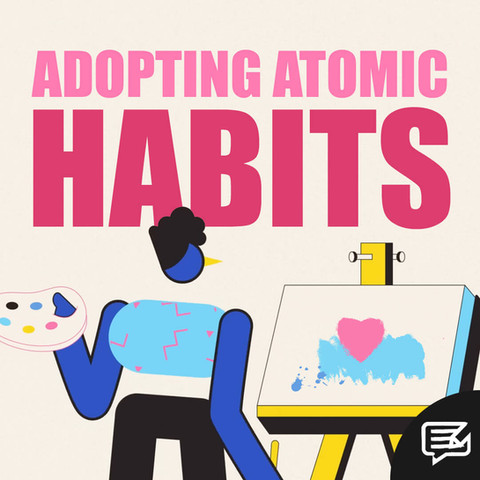
09.01.21
LIFE-SAVING ARTIFICIAL INTELLIGENCE
When you hear the term “artificial intelligence”, what springs to mind first? For some, it will be the threat of a robot takeover, in part thanks to the “Hollywood” treatment the subject matter has received in recent decades. But what about “life-saving”?
Do you associate AI with improving the quality and longevity of human lives? Perhaps it’s time you did.



In August 2020, Forbes published an interesting article detailing “5 Life-Saving Applications of Artificial Intelligence”. The article covers accident prevention, healthcare delivery, medical condition detection, improved pharmaceutical solutions, and the end of human trafficking. The article concludes:
“AI is giving human beings a greater chance at safe and happy lives.”
I like this sentence. It encapsulates the role of AI perfectly. AI can’t guarantee the safety or happiness of humans – nothing can – but it can vastly improve the odds.
Construction IQ is one such application. In an article introducing the latest addition to Autodesk BIM 360 (construction management software), CIO.com wrote:
“By predicting when falls are likely to happen, along with other dangers to life, limb or work; it [Construction IQ] is already proving dramatically useful in reducing risk dividends for businesses.
“Construction IQ uses NLP algorithms – parsing human language – in order to assess risk and warn of hazards that might go unnoticed by human safety managers. By adding to this suite through the use of tools such as 360-degree cameras etc, this technology is well on its way to saving lives. Other research suggests that soon automatic detectors could even assess the toxicity of air in relation to life expectancy and other predictive capabilities.”
It continues:
“One construction company using the BIM 360 platform achieved almost a 20% reduction in quality and safety issues on site. They were also able to reduce the amount of time taken to take care of these issues by almost 25%. This has in part become possible due to the abundance of data available at construction sites, but recent updates to AI have also made it very much possible…
“The vast amount of data processing capabilities possessed by AI goes far beyond simple analytics. In fact, at BAM, data harvested from over 150 million construction issues at 30,000 real-world projects powers their safety algorithm.”
It’s a prime example of how a unified, AI-powered approach is changing historically dangerous workplaces for the better.
But it’s not just workplace accidents where AI can help. Work is already well underway to reduce road accidents too, and not just where “futuristic” autonomous vehicles are concerned.
Nauto is a real-time, AI-powered “driver behaviour learning platform” that seeks to predict, prevent and reduce road accidents. Catchy, right? According to Futurithmic:
“It does this using a multi-sensor device with computer vision and cameras observing both the road and the driver, collecting data and using machine learning algorithms to detect distracted driving, drowsiness, tailgating, hard acceleration or braking, cell phone or cigarette use and collisions.”
According to Nauto’s website, over 400 brands around the world have deployed their AI driver and fleet safety platform, resulting in the detection of more than 174 million high-risk driving events and an estimated savings (from potential collisions) of $225 million.
Nauto’s models are fuelled by insights from over 823 million AI-processed video miles, enabling the system to alert drivers in real-time with a high level of accuracy. Behaviours are then corrected with audio and visual cues, beginning with a “behaviour nudge” and “voice coaching”, before escalating to “urgent warning”.
A Driver Safety Study conducted by Nauto found that 99.6% of drivers in the study exhibited at least one distracted driving event. Deemed “looking down” distractions by Nauto, each lasted between two and 20 seconds, and included interaction with the in-vehicle radio, climate control, radio (other), cell browse, cell text, reading / writing, cell dial, cell reach, eating, drinking or reaching for an object.
99.6% is a frighteningly high percentage, but not unexpected. When you consider your own driving behaviours – fiddling with the radio, taking a swig from a water bottle, calming your crying child – it’s not surprising at all.
The headline on Nauto’s homepage reads: There hasn’t been a significant in-vehicle innovation since the seatbelt in the 1960’s. Now there is. If that is the case – where safety is concerned, at least – let’s hope such technology is made available for all vehicles in the future. I’d go one step further and suggest it be made mandatory. What do we have to lose? I’d much rather a “behaviour nudge” than a potentially fatal crash.
But how can AI help avoid collisions without the need for (potentially costly) hardware?
That’s where !Important comes in. A new app, designed by Bastien Beauchamp as part of UC Berkeley SkyDeck’s startup accelerator program, is said to provide “the digital version of a seat belt”.
According to Berkeley News:
The technology works by analyzing the GPS coordinates of pedestrians, cyclists and drivers who have downloaded the app and then comparing it with their speeds and directions of travel. From there, an artificial intelligence (AI) algorithm processes the anonymous, encrypted data to decide if there’s a risk of a serious collision.
If there is, the app then sends an alert to the phones and vehicle systems involved. In some cases, with the right implementation, the app also triggers automatic brakes in both self-driving and people-driven vehicles to prevent potentially fatal collisions.
To confirm that a pedestrian is detected, the oncoming vehicle’s headlights flash, and the pedestrian’s phone vibrates.
It’s still very early days where !Important are concerned (with the app only completing beta testing in August this year), but Beauchamp has big plans nonetheless:
He is in conversations with major cellphone carriers and car manufacturers to provide testing and validation of their technology. He hopes the app will soon be installed in vehicles and smartphones throughout the country.
There may be a long road ahead, but any innovation with the potential to save lives is inherently worthwhile. Maybe AI doesn’t spell the end of humanity after all…

























































